Low-poly bullfinch
Low poly design is quite popular these days. Luckily, it’s actually not that difficult to do, since it effectively is the reduction of complex forms into something much simpler and a bit abstract. This is why last weekend I set out to doing a low-poly bullfinch:
For my German readers: Den Dompfaff gibt’s auch auf Deutsch auf knisterkiste.com.
At the bottom of this post, you will find a template for building your own – it’s roughly the same size as the actual bird, so it will make for a nice decoration inside the house. I have to warn you, though: Low-poly does not mean that it is easy to build. In fact, with all the different angles and especially the pointed wings and small beak, it takes some patience. And the template is admittedly quite confusing. It’s the best I can do though, as the model itself requires a template that is significantly more complex than more straightforward, ‘square’ papercraft projects.
Anyway, if you are still reading, you may have the courage it takes to actually do this project. Here are instructions:
The template is numbered. Carefully assemble it by glueing the flaps in the order in which they are numbered. Even with the numbering, it’s sometimes a bit difficult to figure out where the opposite side for a flap is. Keep the template PDF open (or a second printout at hand) while assembling.
Start with the left wing:
Next, the lower part of the body:
This is the right wing which will be formed by glueing flap no. 10 into place:
This is what it will look like from below:
Now follow the flaps in the numbered order:
The bird slowly takes shape:
This is the tail and uppermost part of the body:
Next comes the head. This is a bit tricky because of the small size of the faces. Start with no. 27 which will form the beak, then follow the numbers:
This is the head from the front:
And from the side, with the beak pointing to the right:
Now attach the head to the body:
Now attach the tail, using flaps 39, 40, and 41:
Then, finally, close the body by glueing on the remaining strip. Be patient and wait until the glue sets for each flap:
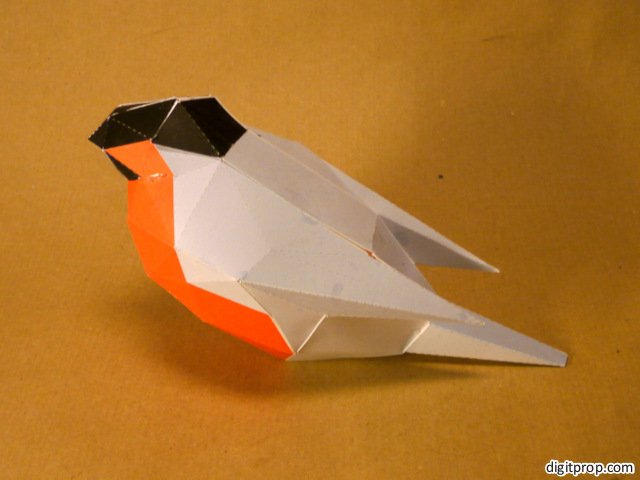 The finch does not have legs, as those would have added a lot of complexity. But it ‘stands’ on its belly nicely. Alternatively, you can hang it from the ceiling, but since the wings are in a resting position, it will look better sitting on a shelf or twig.
The finch does not have legs, as those would have added a lot of complexity. But it ‘stands’ on its belly nicely. Alternatively, you can hang it from the ceiling, but since the wings are in a resting position, it will look better sitting on a shelf or twig.
Here is the PDF template:
 This work is licensed under a Creative Commons Attribution-NonCommercial-NoDerivatives 4.0 International License. For more details on what you can and cannot do with my work, see here.
This work is licensed under a Creative Commons Attribution-NonCommercial-NoDerivatives 4.0 International License. For more details on what you can and cannot do with my work, see here.
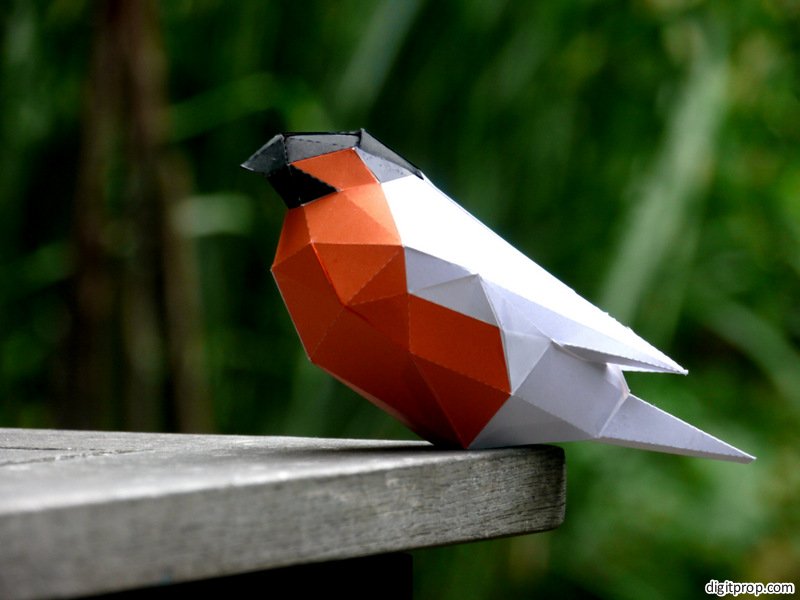
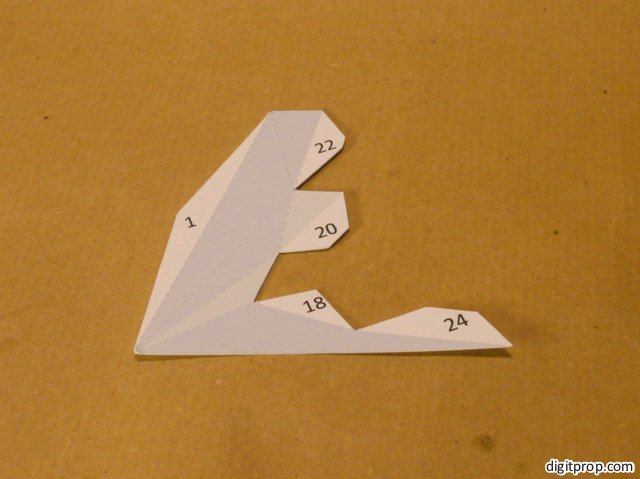
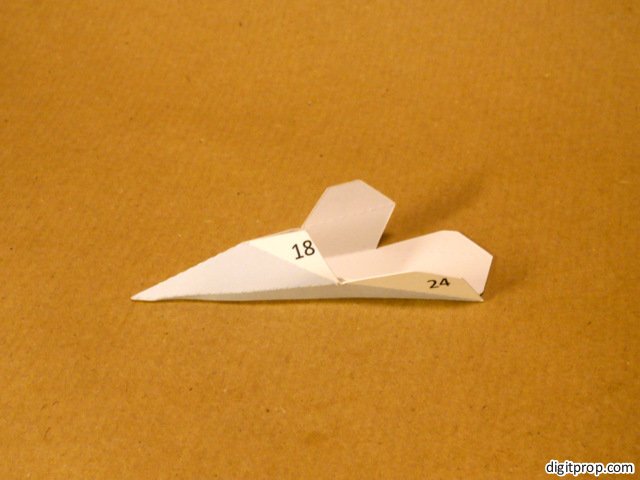

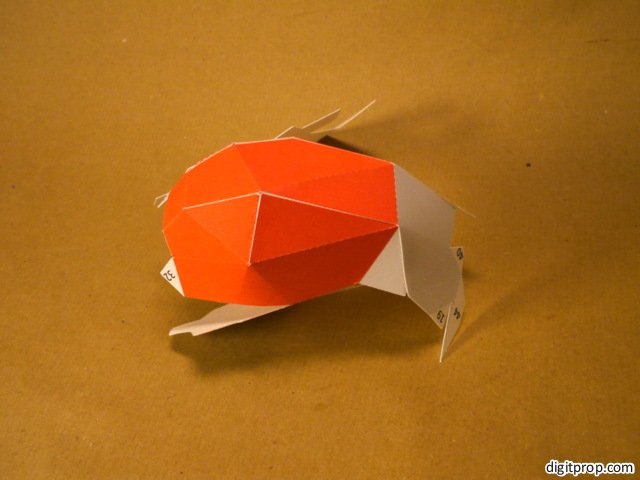
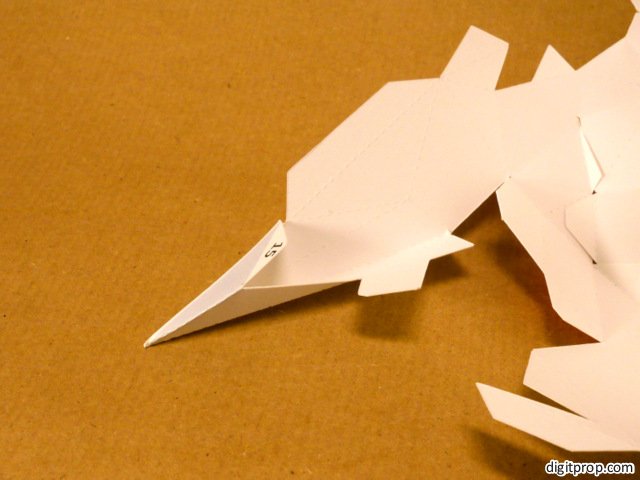

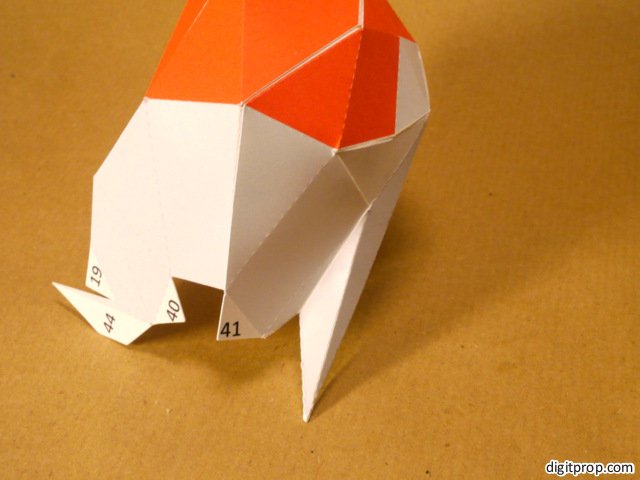
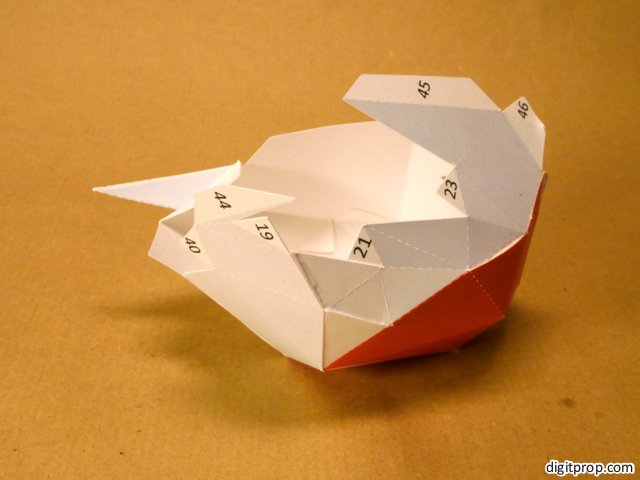

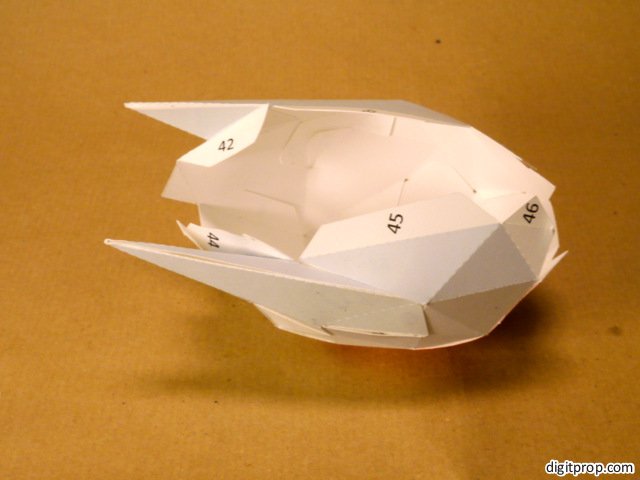



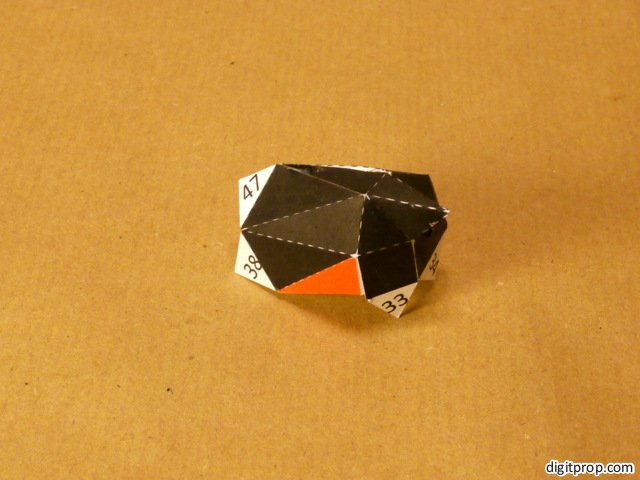
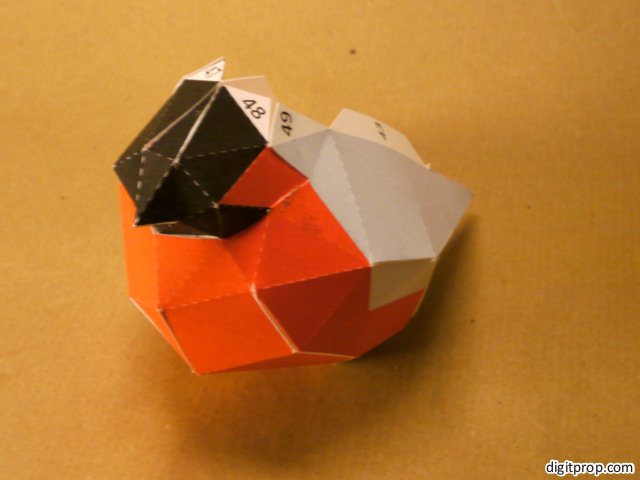
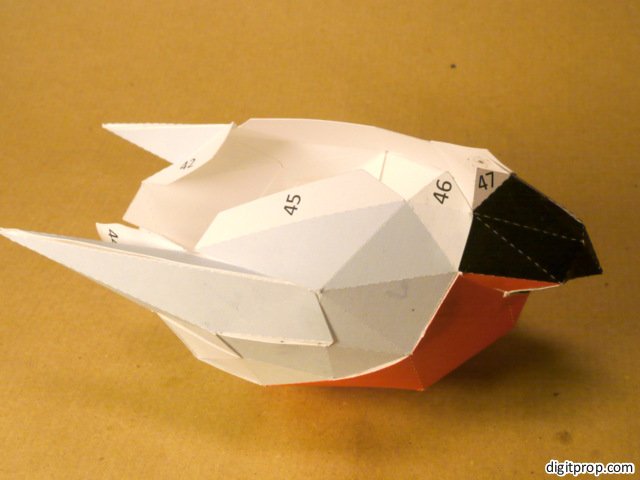

can you make a video? I’m having trouble
Yeah, assembling this model is not exactly easy. At the moment I am very busy, but once things are less hectic I’ll try to make a video.
Measures?
About 16cm x 7cm x 8cm.
ME ENCANTA !!! Tiene usted un colibrí ? hummingbird ???
Sorry, no hummingbird. Maybe in the future…
Excellent little bird, and impressive it fits on a single sheet of paper.
Did you use by chance use a Silhouette Cameo to cut it out? It looks like your edges are perforated for easy folding. If so, I’d love a studio file if you have one.
You are almost right, I use a Silhouette Portrait. As such, I don’t have the Designer edition of Silhouette Studio, which would be needed to import the artwork in SVG format.
Again, thank you for your amazing creativity and generosity. Will be taking Jonah And The Whale next summer to Camp Fellowship for a craft project. Oh, Sweetie, the bird, maybe later, much later.
Am going to try the bird! – it will be good for my patience building…and I also will do Jonah and the Whale.
Haven’t yet looked at the rest of your email. Thanks for sharing so generously!
Good luck with the bird!